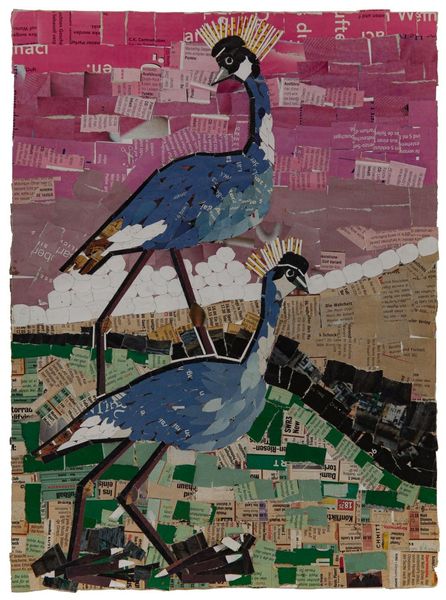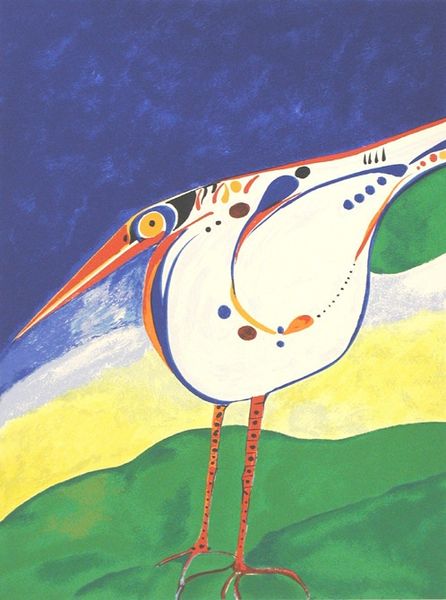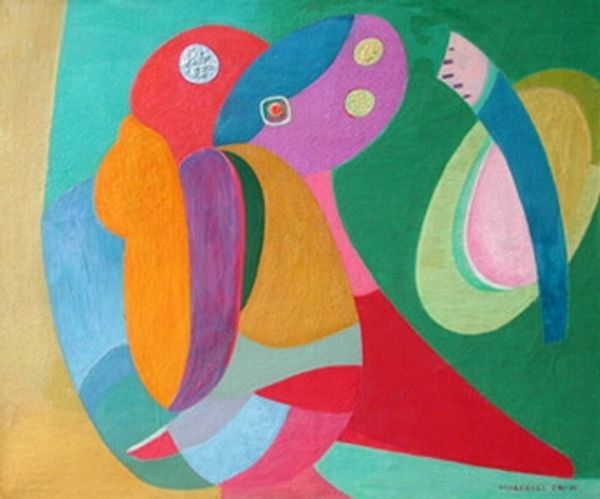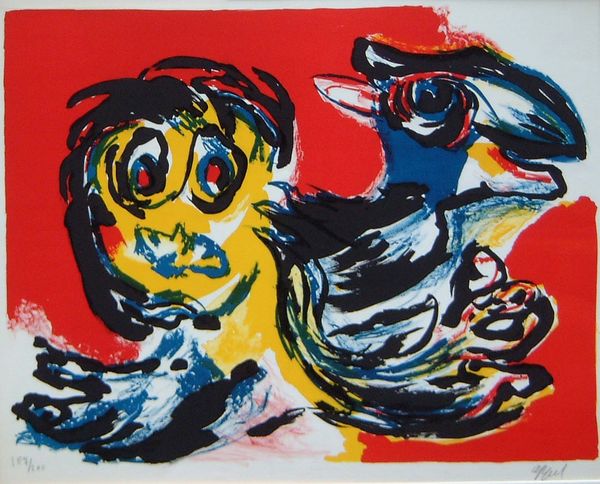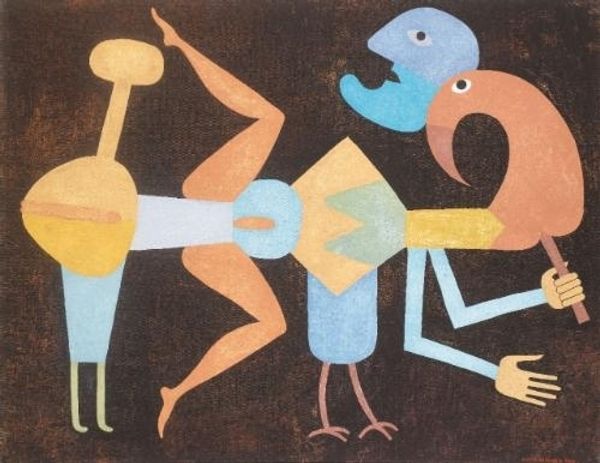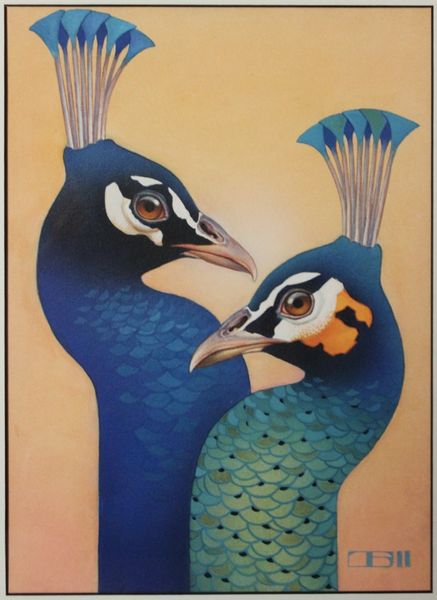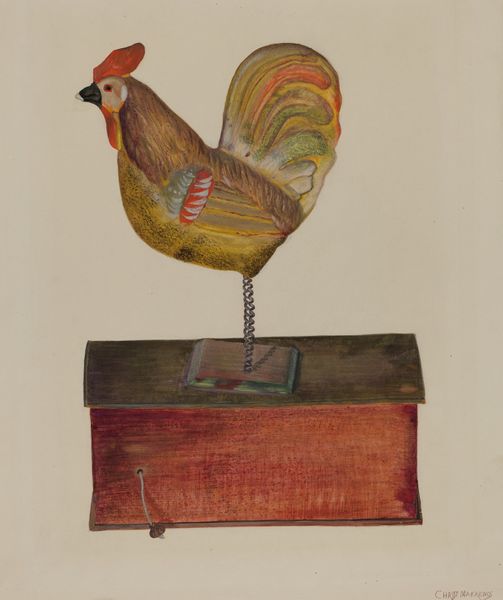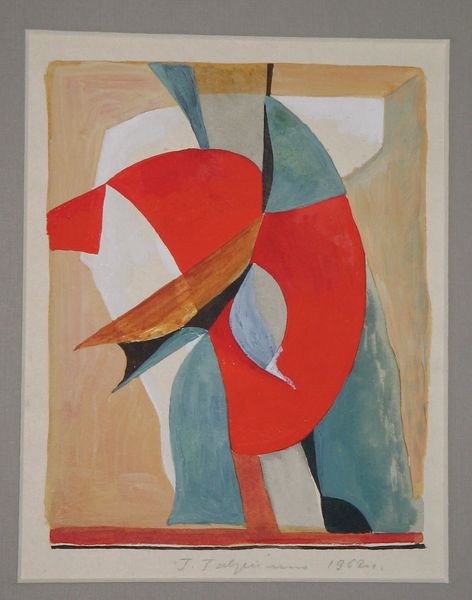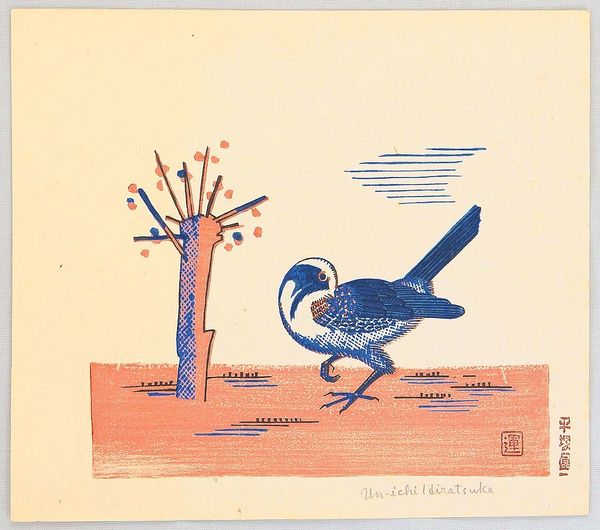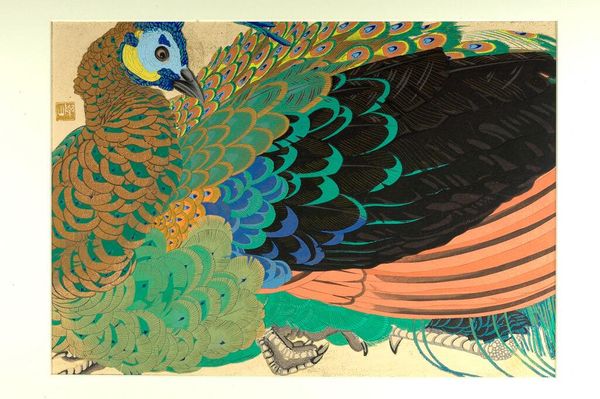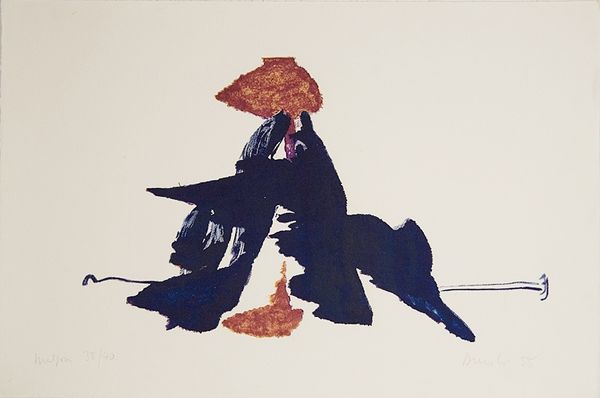
Copyright: Aldemir Martins,Fair Use
Curator: What a vibrant piece! Aldemir Martins's "Pavão," created in 1995, immediately strikes me as cheerful. Editor: Yes, cheerful is definitely the word. There’s an almost Matisse-like playfulness in the colour palette and simplified forms, even though it has distinct "Pop art" influences. Martins, drawing on figuration with elements of abstraction, captures a unique aesthetic sensibility. I’m wondering how the socio-political environment of Brazil in the mid-90s influenced this particular choice of vibrant color? Was he deliberately moving away from darker themes or directly engaging with contemporary Brazilian culture? Curator: That's an insightful question. We need to delve into the cultural history. However, even without that knowledge, the formal aspects are striking. Note the flattened perspective and bold outlines. It suggests, to me, an interrogation of traditional art historical perspectives around landscape. The piece disrupts established Western visual tropes. It creates its own form, not beholden to academic styles, with almost postmodern approach. Editor: I can see that. It could be read as a subversion of European standards in fine art, offering an alternative visual language more relevant to a distinctly Latin American identity. The “bird” – a figure seen in different cultural symbols – raises the question of what this figure might represent in relation to gender and political resistance. Martins, through his works, could be offering not just a beautiful aesthetic object, but a powerful cultural commentary, inviting a wider, more intersectional engagement. Curator: Precisely. And regardless of specific intent, I do believe that this piece's accessibility allows for numerous, diverse perspectives, moving beyond one static interpretation. The museum becomes a meeting point, a ground of various intersections. Editor: Indeed, placing this artwork in our collection calls for further exploration of its socio-cultural dimensions and its potential for stimulating dialogue across generations and communities. It brings to the surface themes concerning representation, agency and identity within evolving Brazilian politics.
Comments
No comments
Be the first to comment and join the conversation on the ultimate creative platform.
